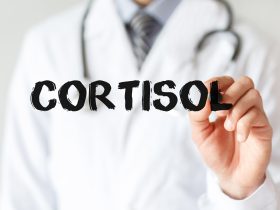Nail abnormalities can manifest through various changes in the appearance and texture of fingernails and toenails. While some alterations may be harmless, others can signal underlying health issues or conditions that necessitate medical evaluation.
Because nails can serve as indicators of overall health, it’s essential to monitor them for any abnormalities, such as changes in shape, color, thickness, or texture. By staying vigilant and maintaining good nail hygiene and nutrition, you may be able to prevent certain nail issues.
Therefore, it is time to discuss common nail abnormalities, including their causes, and provide guidance on when to seek advice from a healthcare professional.
What Are Nail Abnormalities
The condition of your nails can provide valuable insights into your overall health. Healthy nails typically exhibit consistent coloration without any irregular spots or discoloration, and they feature a smooth surface devoid of grooves or pitting.
Changes in nail shape, color, thickness, and texture can indicate various nail abnormalities. These abnormalities can affect both fingernails and toenails and while some alterations may occur naturally, others may signal an underlying health issue.
Unhealthy nails may present with several signs and symptoms, including dents, discoloration or spots, nail separation, and ridges. These abnormalities can arise from a range of factors, ranging from minor injuries to nutritional deficiencies and underlying systemic diseases. For instance, the brittleness of nails is often considered a typical consequence of aging.
It’s crucial to seek guidance from a healthcare professional if you notice any concerning changes in your nails. A healthcare provider can thoroughly evaluate the underlying cause and develop an appropriate treatment plan tailored to your specific needs.
Causes of Nail Abnormalities
Here are some common nail abnormalities to be aware of and their potential causes:
- Onycholysis
Onycholysis is a condition characterized by the detachment of the top of the nail, known as the nail plate, from the nail bed. This separation results in a visible white space between the nail plate and the nail bed.
The causes of onycholysis can vary and may include conditions such as psoriasis, an autoimmune skin disorder, or fungal infections. Additionally, injuries, such as those incurred from sharp objects during a manicure or while cleaning under the nail, can also lead to onycholysis.
If you are unsure about the underlying cause of the nail detachment, it is advisable to seek guidance from a healthcare provider.
They can assess your condition and provide appropriate treatment based on the identified cause, whether it be psoriasis, a fungal infection, or another contributing factor.
- Koilonychia
Koilonychia, commonly known as “spoon nails,” refers to a condition characterized by flattened nails with depressions that give them a cupped or spoon-shaped appearance. This condition is often associated with iron deficiency, a common nutritional deficiency.
If you observe a spoon shape in your nails, it is advisable to consult a healthcare provider to determine the underlying cause. Iron deficiency could be a potential factor, and prompt diagnosis and treatment are essential to address the deficiency and prevent potential complications.
Discussing your concerns with a healthcare provider can lead to appropriate management and treatment measures, which may include interventions to correct the iron deficiency.
- Mees’ Lines
Mees’ lines, also referred to as striate leukonychia or transverse leukonychia, manifest as thin white bands across the surface of the nails. These lines may appear due to nail damage, such as from a manicure, leading to the development of Mees’ lines on the fingernails.
When Mees’ lines are present on both the fingernails and toenails, it is advisable to consult a healthcare provider. This could potentially indicate an underlying medical condition, particularly if the lines are a result of toxicity from substances like arsenic.
However, chemotherapy drugs are more commonly associated with the development of Mees’ lines. Seeking medical advice is essential for proper diagnosis and management, especially when there is concern about potential toxic exposure or underlying health issues.
- Terry Nails
Terry nails present as a type of leukonychia characterized by a predominantly white appearance of the nail, with a thin dark line evident at the tip. This distinctive nail abnormality has been associated with various health conditions, including:
- Heart failure
- Chronic kidney disease
- Cirrhosis of the liver
- Diabetes
- Hyperthyroidism (excessive thyroid hormone)
- Zinc or iron deficiency
- Hypoalbuminemia (insufficient levels of albumin protein)
- Protein-losing enteropathy (loss of protein through the gastrointestinal tract).
- Pitting
Pitting refers to the presence of small depressions or tiny dents in the nails. Nails affected by pitting may exhibit additional symptoms such as crumbling, loosening, or even falling off entirely. This condition is often associated with systemic diseases, including psoriasis, alopecia areata, and atopic dermatitis.
Seeking assistance from a dermatologist is advisable to address the underlying diseases contributing to nail pitting. A dermatologist can conduct a thorough evaluation, diagnose the underlying condition, and develop a personalized treatment plan aimed at improving both nail health and overall well-being.
- Nail Clubbing
Nail clubbing refers to a condition where the fingernails or toenails exhibit a characteristic downward curvature, resembling the shape of a spoon. This curvature typically develops gradually and may go unnoticed initially.
As nail clubbing progresses, the affected nails often take on a spongy texture upon pressure, and the fingertips may appear swollen.
While nail clubbing can sometimes be an innocuous familial trait, it may also serve as a potential indicator of an underlying medical condition affecting various organs and systems within the body. These conditions may involve the heart, lungs, liver, intestine, or stomach, among others.
Therefore, it is advisable to seek evaluation from a healthcare provider, particularly a dermatologist who specializes in conditions of the nails, skin, and hair, when nail clubbing is observed.
Such healthcare professionals can conduct a thorough assessment and appropriate diagnostic tests to determine the underlying cause of nail clubbing and provide necessary guidance and treatment.
- Beau’s Lines
Beau’s lines, also referred to as Beau lines, are distinctive horizontal ridges or depressions that traverse the width of the fingernails. These lines manifest when there’s a disruption or slowing down in the process of nail growth, leading to the formation of visible ridges or indentations.
These lines can arise due to a multitude of factors, including various health conditions and external influences:
- Malnutrition: Inadequate nutrition, particularly deficiencies in essential vitamins and minerals like iron, zinc, and biotin, can impair nail growth and contribute to the development of Beau’s lines.
- Eczema: Skin conditions like eczema, which can affect the skin around the nails, may also impact nail growth and lead to the development of Beau’s lines.
- Illness: Serious illnesses or systemic conditions can interfere with the normal growth of nails, resulting in the formation of Beau’s lines. Conditions such as diabetes, heart disease, and thyroid disorders are among those that may contribute to this phenomenon.
- Nail Injury: Trauma or injury to the nail bed can disrupt the nail growth process, causing Beau’s lines to appear as the nail attempts to regenerate.
- Chemotherapy: Cancer treatments such as chemotherapy can have various side effects, including affecting nail health. Chemotherapy drugs may lead to changes in nail growth patterns, resulting in the formation of Beau’s lines.
- Significant Stress: Intense or prolonged periods of stress can have a range of effects on the body, including impacting nail health. Stress-induced changes in nail growth patterns may lead to the formation of Beau’s lines.
- Fever: Prolonged or severe fever episodes can disrupt normal bodily functions, including nail growth, and may result in the appearance of Beau’s lines on the nails.
It’s essential to consult a healthcare provider to determine the underlying cause of Beau’s lines and initiate appropriate management or treatment.
- Yellow Nail Syndrome
Yellow nail syndrome is a rare disorder that predominantly affects older adults and is characterized by the presence of yellow, curved, and thickened fingernails or toenails.
While the exact cause of yellow nail syndrome remains unclear, it is believed to be associated with various factors, including rheumatoid arthritis, severe infections, lung disease, as well as habits such as wearing nail polish or smoking.
Furthermore, there is evidence to suggest that yellow nail syndrome may have a genetic component, indicating a potential familial predisposition to the condition.
Individuals experiencing symptoms of yellow nail syndrome, such as thickened and discolored nails that cease to grow, are advised to consult a healthcare provider for proper evaluation and diagnosis. Prompt medical attention is essential.
- Leukonychia
Leukonychia is a condition characterized by the appearance of white spots or streaks on the fingernails or toenails, or sometimes the entire nail may turn white.
These white marks can be caused by various factors, including medication side effects, underlying diseases, or minor injuries such as nail trauma from biting, hitting the nail against something, or during a manicure. There are different types of leukonychia, each associated with different systemic illnesses affecting the entire body.
If you observe white spots or a whitening of your nails, it is advisable to seek advice from a healthcare provider or dermatologist. They can assess the condition, diagnose the specific type of leukonychia present, and recommend appropriate steps, especially if an underlying medical condition is suspected.
Early diagnosis and intervention can help manage any underlying issues effectively.
Ways to Prevent Nail Abnormalities
To prevent nail abnormalities and maintain healthy nails, it’s essential to incorporate good nail care practices into your routine. Here are some tips to help you keep your nails in optimal condition:
- Keep Nails Clean and Dry: Make sure to keep your nails clean and dry to prevent the growth of fungi and bacteria. Moisturize your nails regularly to keep them hydrated and flexible.
- Trim Nails Carefully: Use sharp nail scissors or clippers to trim your nails straight across. It’s best to do this when your nails are soft, such as after a bath or shower, to avoid splitting or cracking.
- Handle Ingrown Nails Properly: Avoid digging into ingrown nails, as this can worsen the condition. Instead, soak the affected nail in warm water and gently lift the edge of the nail away from the skin using a clean, sterile instrument.
- Regularly Trim Toenails: Keeping toenails trimmed can prevent them from repeatedly bumping into the front of shoes, which can lead to trauma or injury.
- Avoid Nail Biting and Pulling Hangnails: Refrain from biting your nails or pulling on hangnails, as this can damage the nail bed and increase the risk of infection. Instead, use nail clippers or scissors to trim your nails and remove hangnails.
- Protect Against Fungal Infections: Avoid walking barefoot in public places, especially in moist environments like locker rooms and swimming pools, to reduce the risk of fungal infections.
By following these simple tips, you can promote healthy nails and reduce the likelihood of developing nail abnormalities.
If you notice any significant changes or abnormalities in your nails, consult a healthcare provider for proper evaluation and treatment.
When to Seek Medical Attention
Knowing when to contact a healthcare provider regarding nail abnormalities is important for maintaining overall health. While some changes in nails may be harmless, others may indicate an underlying health issue that requires attention.
Here are some guidelines on when to seek medical advice:
- Signs of Systemic Conditions: Some nail abnormalities can be signs of systemic conditions, such as psoriasis, diabetes, or thyroid disorders. If you have other symptoms or risk factors for these conditions, it’s advisable to discuss your nail changes with a healthcare provider.
- Persistent or Worsening Abnormalities: If you notice any nail abnormalities that persist over time or worsen despite self-care efforts, it’s essential to consult a healthcare provider. This includes changes in color, shape, texture, or thickness of the nails that do not improve on their own.
- Concerning Symptoms: Pay attention to any accompanying symptoms, such as pain, swelling, or discharge around the nails, as these may indicate an underlying infection or other health problem that requires medical attention.
A healthcare provider, such as a primary care physician or dermatologist, can conduct a physical examination and may order additional tests to determine the underlying cause of nail abnormalities. These tests may include blood tests, nail cultures, or imaging studies.
Once the underlying cause of nail abnormalities is identified, a healthcare provider can design a personalized treatment plan to address the condition effectively. This may include medications, topical treatments, or lifestyle modifications.
Bottom Line
Nail abnormalities can vary widely, from minor issues like slight discoloration to more concerning changes such as thickening or deformation of the nails. While some abnormalities may be harmless and resolve on their own, others could signal an underlying health condition that requires attention.
Regularly inspecting your nails for any changes in color, shape, texture, or thickness is essential for early detection of abnormalities. If you notice any persistent or worsening changes in your nails, it’s important to consult a healthcare provider for further evaluation and appropriate management.















Find Us on Socials